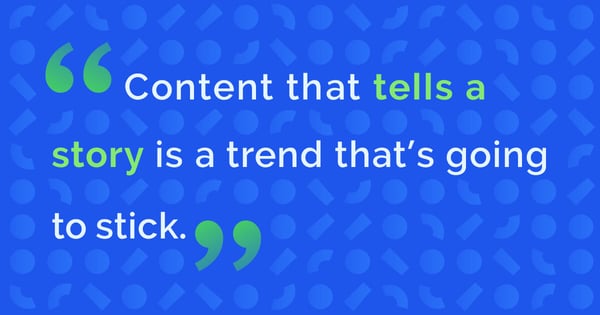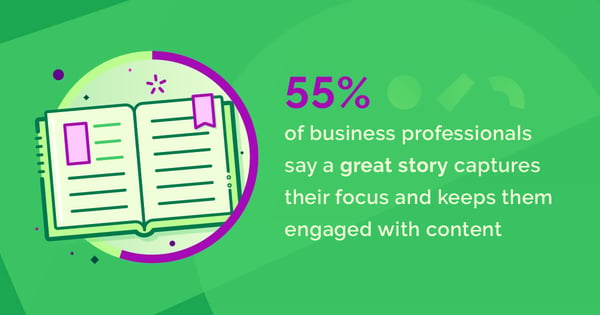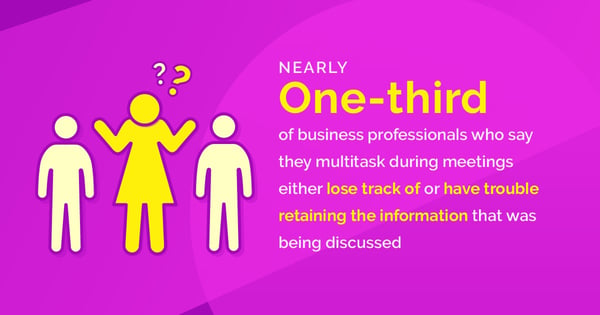We’re roughly six minutes and 34 seconds into your rep’s sales pitch, and I instinctively reach for my phone and begin to check my email, Twitter, and Facebook.
Oh look, a text! Maybe it’s important; I’d better read it.
“One of our most powerful features...Any questions so far?” your rep says.
I look up briefly. “Uh, nope, good here.” We shake hands, the rep leaves, I promise to follow up, but never do.
What happened? I was interested enough to request a demo. I was engaged during introductions and pleasantries. Do I suffer from Nomophobia, or am I just a jerk? Do I have the attention span of a goldfish? Did your rep ever stand a chance?
Binge-culture vs. content overload
This scene should feel familiar to many of you. You’ve likely been both the uninterested audience member and the desperate presenter at some point in your professional lives, and you probably have your own ideas about why we’ve normalized this behavior.
One popular theory is that human attention spans are getting shorter due to the onslaught of social media and digital content. But if I’m a terrible prospect or buyer simply because Twitter, YouTube, and Facebook have shortened my attention span, then how is it that I eagerly sit through two-plus hour movies in the theater with no phone, completely enthralled, on a regular basis? How is it that I can watch hours of Netflix when I get home from work?

The answer: Our attention spans haven’t gotten shorter. They’ve gotten pickier.
In a recent national survey of business professionals we conducted at Prezi, respondents felt their ability to focus has actually improved over time, despite the ever-growing flood of content demanding their attention.
This is partially due to the fact that, as the volume of available content continues to increase, many of us have (out of necessity) become more discerning about what we’re willing to devote our attention to.
The survey results indicate that this trend is likely to increase over time, with younger generations being perhaps the most selective of those surveyed.

The disastrous dangers of disengagement
This means we, marketing and sales professionals, must seriously examine the elements we use to create and deliver content.
Like a successful film or a popular Netflix series, our survey revealed that the key to an effective marketing or sales presentation is a great story accompanied by stimulating visuals and dialogue.
The emphasis on a compelling narrative and its trappings has officially become a requirement rather than a nice-to-have.

When we don’t have content that truly engages us, we multitask, which is bad news for business.
The more we attempt to divide our attention, the less we retain what we were trying to learn. That lack of focus can lead to poor comprehension and a decrease in productivity. Our survey found that 95 percent of business professionals multitask during meetings, and roughly one in three multitaskers report losing track of the information discussed in those meetings.
Even worse, one in five admit to later making critical errors in their work because they weren’t paying full attention.
Am I guilty of it? Yes, of course. But now I know what I need to know to make a change, and I encourage those of you reading this to do the same.

Add to that the insight that millennials (now the largest generation in the workforce) struggle more than those in Generation X or baby boomers with the negative impact of multitasking, and this becomes a problem that’s only going to get worse. Yikes.
How to flush the goldfish (statistic) and build better content
So, to review: Our attention spans are not shorter than a goldfish’s. If anything, we’re more likely to binge on the content we like for longer than ever before.
However, attention spans are in constant, unrelenting demand, and, by necessity, much more selective. If we aren’t creating content that ultimately caters to today’s preferences, our audiences are going to multitask, which is detrimental to business.
This brings me back to the sales rep I mentioned earlier. I didn’t follow up with them because I don’t actually remember what they were selling. I saw a PowerPoint deck and almost immediately started splitting my attention between their canned spiel and my phone. I—no, we—need that rep to step up their game, especially during a pitch or any other business presentation setting.
Most business professionals say that a strong narrative is critical to keeping the audience engaged. Many also said heavy use of text and bullet points in presentations leads to disengagement and makes it more difficult to remember information.
As creators and deliverers of content, we need to renew our focus on story, compelling visuals, and stimulating dialogue.
As buyers, we can—and should—be more selective about where we focus our attention and demand better.
The attention economy: a new era
Marketers and sales professionals must shift their focus from simply delivering information to crafting compelling narratives that resonate with their audience. By investing in storytelling, leveraging visuals, and creating interactive experiences, businesses can break through the noise and drive meaningful engagement.
Learn more about customer communication to improve your daily operations.
 by Alexandra Vazquez
by Alexandra Vazquez
 by Ajay Bharathi Puram
by Ajay Bharathi Puram
 by Colin Danaher
by Colin Danaher